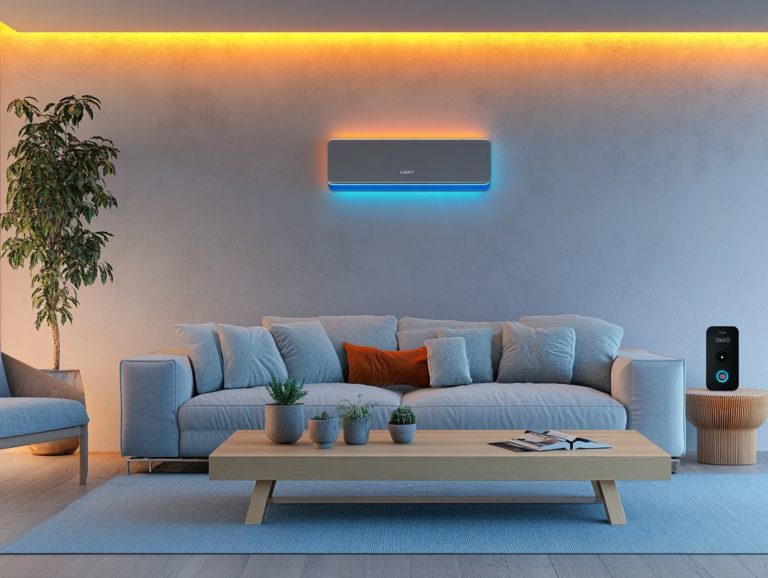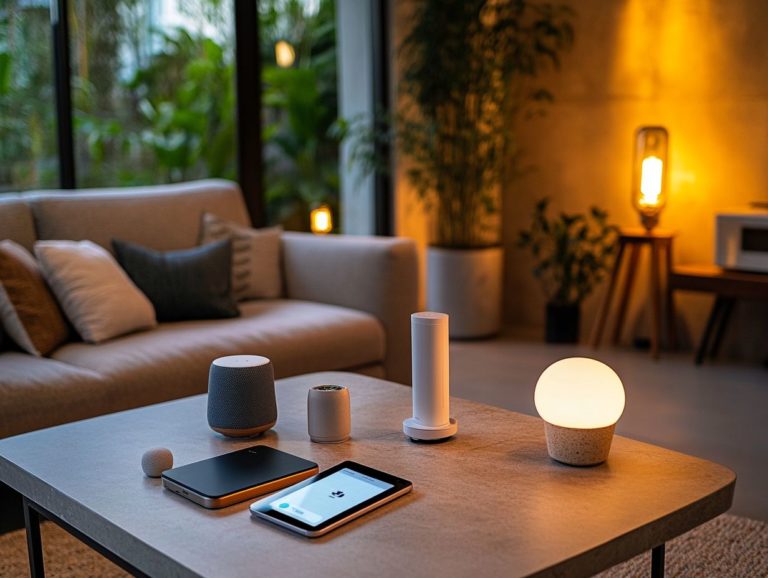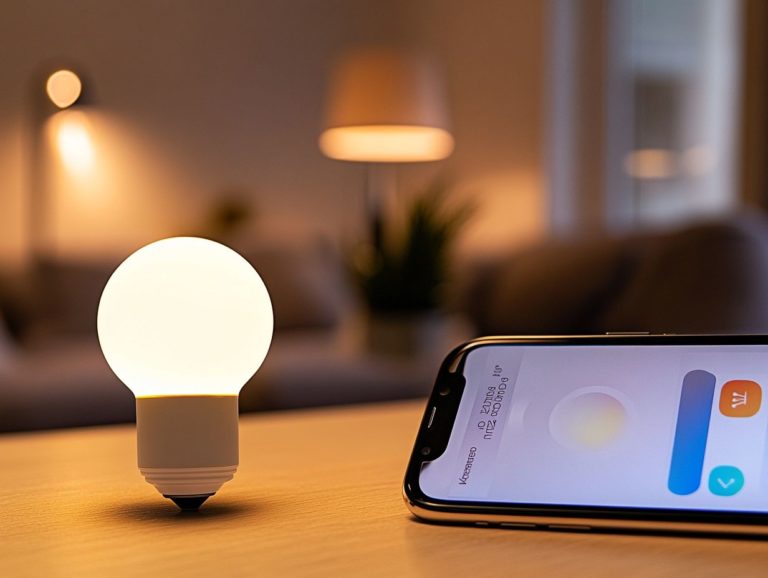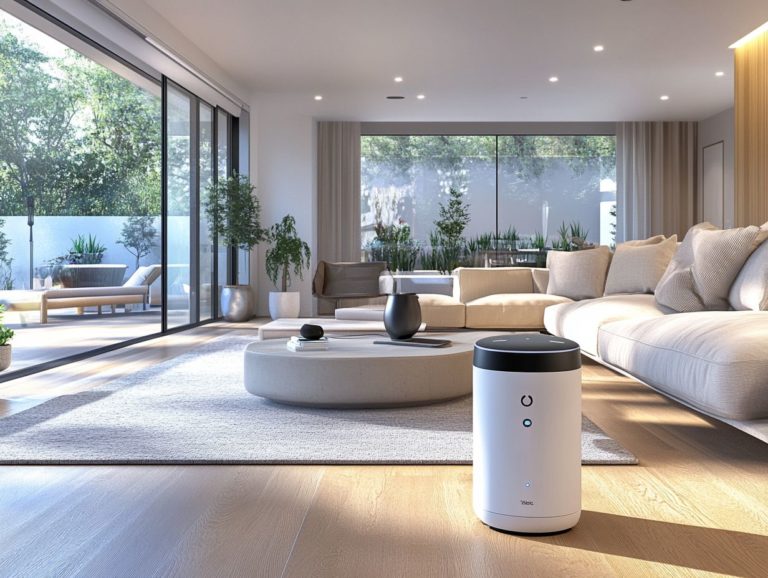Smart Thermostats vs. Traditional Thermostats
Managing your home’s temperature is crucial. Understanding the differences between traditional and smart thermostats can enhance your comfort and save energy.
This exploration delves into the features and limitations of traditional thermostats while highlighting the benefits of their smart counterparts. It includes initial costs, potential long-term savings, ease of installation, user-friendliness, and energy efficiency.
By the conclusion, you’ll be well-equipped to decide on the thermostat that best aligns with your needs.
Contents
- Key Takeaways:
- Traditional Thermostats
- Smart Thermostats
- Cost Comparison
- Installation and Compatibility
- User-Friendliness
- Energy Efficiency
- Frequently Asked Questions
- What is the main difference between smart thermostats and traditional thermostats?
- Do smart thermostats save more energy than traditional thermostats?
- Are smart thermostats more expensive than traditional thermostats?
- Can I control my smart thermostat if I am away from home?
- Do smart thermostats require a Wi-Fi connection?
- Can I still use my smart thermostat if I don’t have a smartphone?
Key Takeaways:
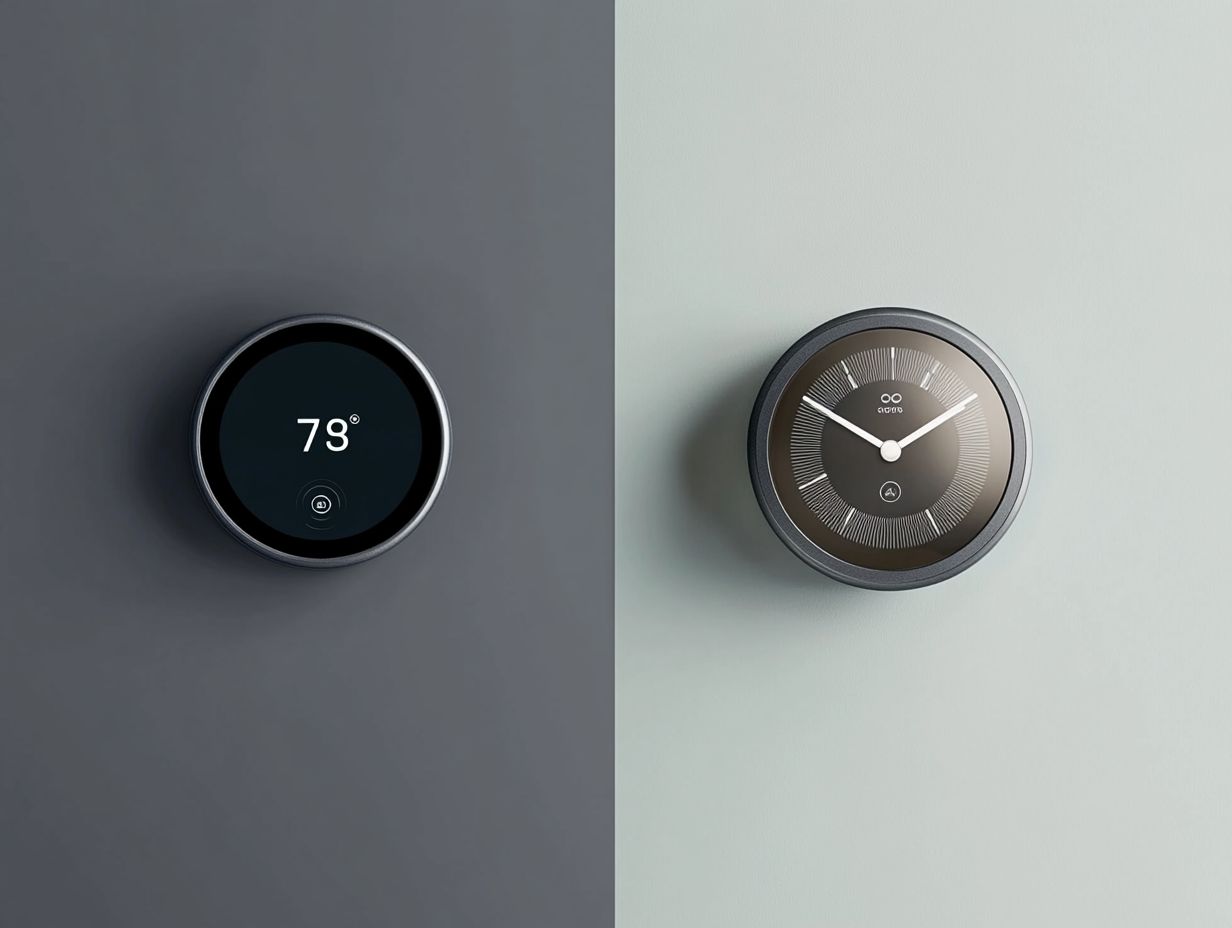
- Smart thermostats are user-friendly and energy-efficient.
- The initial investment may be higher, but savings add up over time.
- Installation is easy, offering more control compared to traditional models.
What is a Thermostat?
A thermostat is essential for heating and cooling systems, regulating temperature settings to ensure your comfort at home or in any building. It serves as the vital link between your HVAC system and the desired climate, giving you precise control over your heating and cooling needs.
By responding to ambient temperature, thermostats automatically adjust to maintain a consistent environment, leading to energy savings and reduced energy bills.
You’ll find various types of thermostats, each offering unique features aimed at enhancing energy efficiency and user convenience. Traditional models allow for manual adjustments, while programmable thermostats let you set specific temperature schedules, optimizing energy use when your home is empty.
If you re looking for sophistication, smart thermostats elevate the game by learning your habits and preferences. They offer remote access via smartphones, giving you ultimate control and customization.
Upgrade to smart thermostats today! Boost your indoor air quality, reduce your carbon footprint, and watch your utility costs drop.
Traditional Thermostats
Traditional thermostats are simple manual devices that let you control your heating and cooling systems with basic temperature settings. However, these devices often lack the advanced features available in modern smart thermostats.
While they have proven reliable over decades, they have limitations, such as the absence of remote access and the inability to make automatic adjustments based on your presence. This can lead to higher energy bills and less efficient energy usage.
Features and Limitations
Traditional thermostats rely on manual settings, allowing for temperature adjustments but often resulting in inconsistent energy consumption and discomfort.
You might frequently check and modify the settings to keep your home comfortable, which can lead to higher heating and cooling bills, especially during extreme weather. These devices are typically straightforward and user-friendly, appealing to those who prefer simplicity over complexity.
However, their lack of programmability makes it challenging to optimize energy efficiency. Unlike modern alternatives, traditional thermostats don t consider the time of day or your occupancy patterns, leading to unnecessary heating or cooling.
Without the ability to work with smart home systems, these thermostats can keep you stuck in outdated practices that don t align with today s energy-saving strategies. You may face higher utility costs and less comfort in your home.
Smart Thermostats
Smart thermostats, like the Nest Thermostat and Ecobee, transform how you manage your home s climate by delivering advanced features that elevate both energy efficiency and user convenience.
These Wi-Fi-enabled devices can learn your habits, automatically adjusting temperature settings to ensure optimal energy usage without sacrificing comfort.
With the added benefit of remote access, you can effortlessly control your heating and cooling systems from virtually anywhere, setting the stage for an unparalleled home automation experience.
Features and Advantages
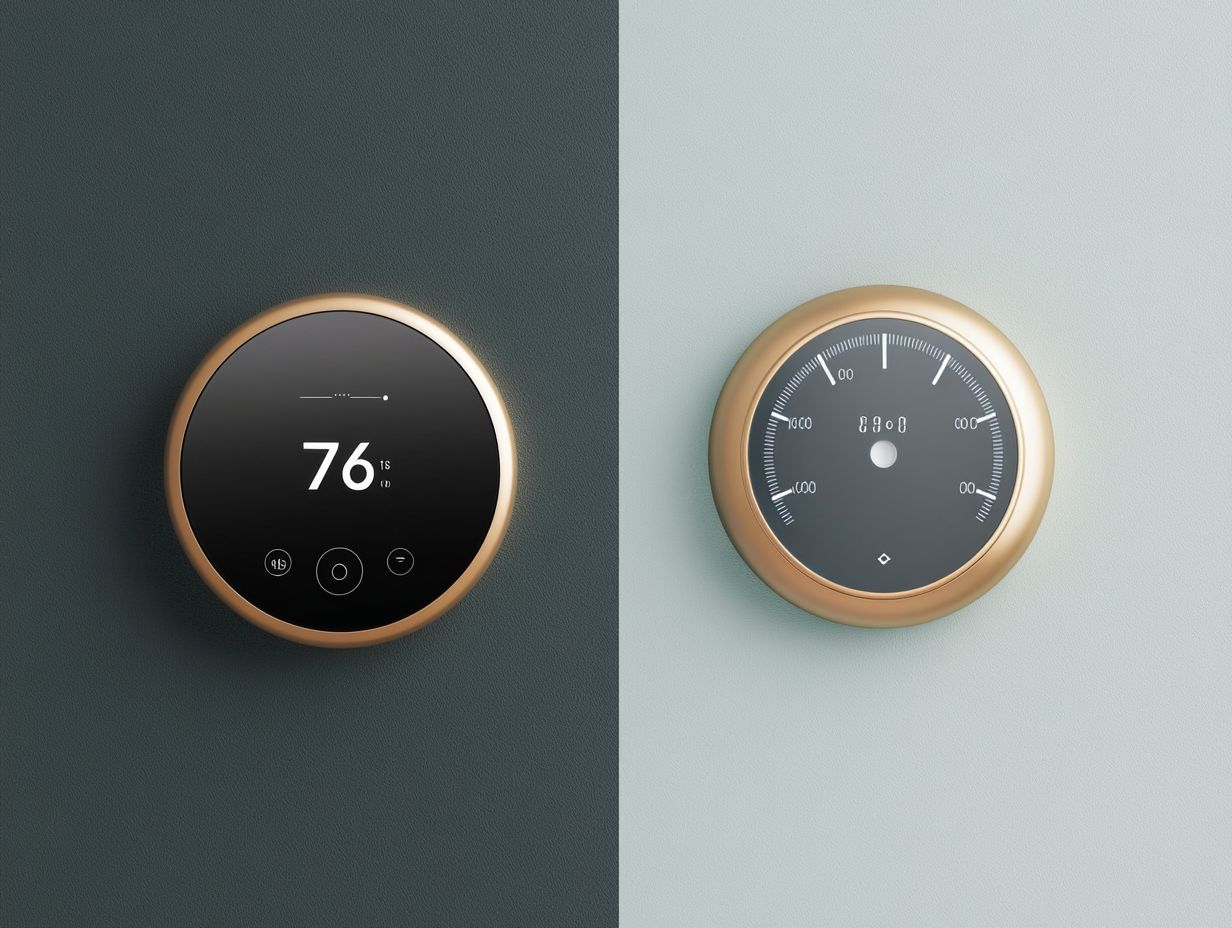
Smart thermostats are equipped with innovative features like energy-saving technology, presence sensors, and automatic adjustments, all designed to enhance your home comfort while reducing energy consumption.
These advanced devices don t just learn your preferences over time; they also adapt to external temperature changes, ensuring they operate at peak efficiency and significantly lower your energy bills.
Beyond these impressive capabilities, you’ll find extensive user control options that allow you to customize your heating and cooling schedules from your mobile device. This makes managing your energy use incredibly easy and convenient even when you re not at home!
Many models seamlessly work together with your existing home automation systems, ensuring comprehensive connectivity with other smart devices like lights and security systems. This adds both convenience and efficiency to your life.
Additionally, these thermostats provide insightful analytics on your energy use, giving you the power to make informed decisions that contribute to sustainable living and long-term cost savings.
They showcase their role in not just enhancing your comfort but also promoting environmental responsibility.
Cost Comparison
When evaluating the cost of heating and cooling solutions, you ll find that comparing the initial investment of smart thermostats to traditional ones unveils considerable long-term savings potential.
Although smart thermostats may come with a higher upfront price tag, their ability to optimize energy consumption through automatic adjustments and learning capabilities often leads to lower monthly energy bills. This makes them a prudent investment for homeowners like you who aim to elevate both comfort and efficiency in your living space.
Initial Cost and Long-Term Savings
The initial cost of smart thermostats typically falls between $100 and $300, which might appear steep when stacked against traditional models. However, the long-term savings they deliver can quickly translate into a significant return on investment (ROI). By leveraging features such as energy-saving technology and real-time monitoring, you can save an average of 10-15% on your annual energy bills, effectively offsetting that upfront expense.
These modern devices seamlessly adapt to your household s unique heating and cooling needs while also enhancing convenience through smartphone integration and remote control. As you embrace a smarter lifestyle, the benefits can multiply, leading to even greater savings as energy prices fluctuate.
Over the years, the cumulative impact of reduced energy consumption can turn your initial investment into substantial financial gains, positioning smart thermostats as a savvy choice for anyone aiming to enhance their home s energy efficiency and cut overall costs.
Installation and Compatibility
Installing a smart thermostat comes with a unique set of considerations that differ from those associated with traditional thermostats. You’ll want to pay close attention to compatibility with your existing heating, ventilation, and air conditioning (HVAC) system and the installation process itself.
Many smart thermostats, like the Nest Thermostat and Ecobee, are crafted for user-friendly installation, often giving homeowners the power to tackle the project on their own.
If your HVAC setup is particularly intricate, it s best to seek professional help.
Ease of Installation and Compatibility with HVAC Systems
The ease of installation is one of the standout advantages of smart thermostats, allowing you to set them up without the need for professional help, assuming your HVAC systems are compatible. On the other hand, traditional thermostats, while simpler in design, often require more manual adjustments and calibration to sync with various heating and cooling systems, which can be a drawback for some.
Smart thermostats typically come with clear, step-by-step instructions, often paired with intuitive mobile apps that guide you through the entire process. This is a stark contrast to traditional models, which can demand a more hands-on approach that may feel cumbersome for those who aren t particularly tech-savvy.
Compatibility can sometimes be a hurdle, as not all smart devices play nicely with every heating or cooling system. You might need to double-check the specifications for compatibility. Fortunately, many manufacturers are increasingly addressing this issue by designing their products to work seamlessly with a wider range of HVAC systems, thereby enhancing your experience and satisfaction without sacrificing functionality.
User-Friendliness
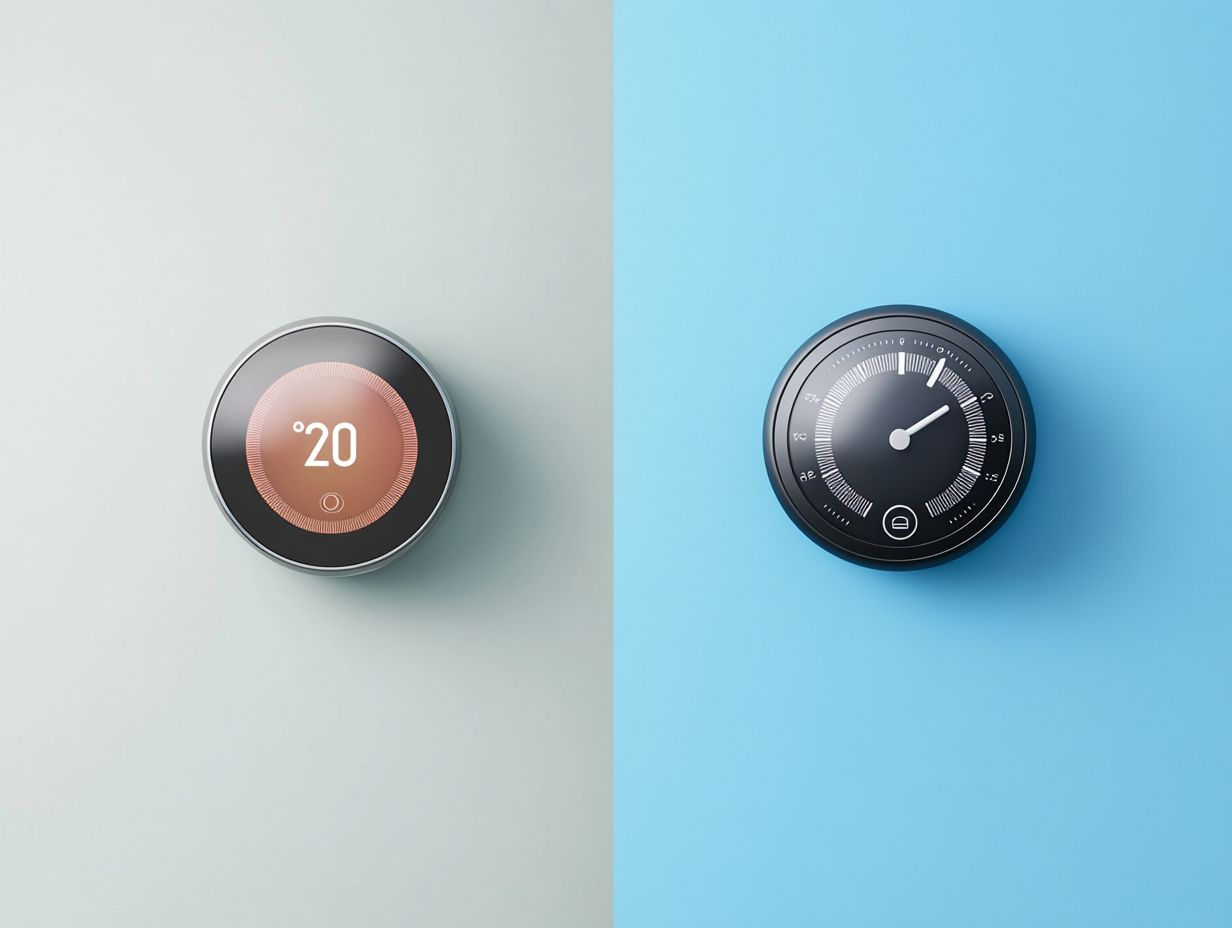
User-friendliness is an important consideration when selecting a thermostat. Smart thermostats enhance your experience with their intuitive programming and control options.
Unlike traditional thermostats that require manual adjustments, smart thermostats offer a sophisticated, user-friendly interface complemented by advanced features.
With remote access via mobile apps, you can effortlessly manage your home s heating and cooling from virtually anywhere. This ensures comfort is always at your fingertips.
Programming and Control Options
Smart thermostats provide advanced programming and control options that make managing your home climate a breeze. With customizable schedules and mobile app access, these devices contrast sharply with traditional models, which often rely on manual adjustments.
This versatility gives you the power to tailor settings to fit your lifestyle, optimizing energy usage while enhancing overall comfort. Unlike the static settings of conventional thermostats, smart thermostats seamlessly adapt to your individual routines.
Many models come equipped with learning algorithms that analyze your patterns over time, automatically fine-tuning settings for maximum efficiency. The ability to control your thermostat remotely via your smartphone allows you to make real-time adjustments from anywhere, boosting both comfort and energy savings.
Smart technology offers convenience and encourages a more eco-friendly approach to temperature regulation, benefiting both the environment and your household budget.
Energy Efficiency
Energy efficiency is essential in contemporary home technology, and smart thermostats play a crucial role in enhancing energy utilization while delivering noteworthy savings on your energy bills.
These sophisticated devices utilize advanced algorithms to understand your habits and fine-tune heating and cooling schedules. The result? Energy is consumed efficiently, all without compromising your home’s comfort.
Impact on Energy Usage and Savings
The impact of smart thermostats on your energy usage and savings is remarkable. Studies reveal that households using these devices can achieve an average reduction of 10-15% in energy consumption.
By intelligently adjusting temperature settings and leveraging energy-efficient features, smart thermostats give you the power to significantly lower your energy bills while embracing a more sustainable lifestyle.
This reduction in energy consumption can translate into substantial financial savings, often amounting to hundreds of dollars each year. You’ll appreciate features like scheduling, geofencing which allows the thermostat to adjust based on your location and learning capabilities, which dynamically optimize heating and cooling based on your occupancy patterns and preferences.
According to a report from the U.S. Department of Energy, harnessing these advanced functionalities can yield energy savings comparable to minor upgrades in insulation or HVAC systems.
Integrating smart thermostats with your home automation system enhances efficiency and simplifies how you manage your energy usage, leading you toward a more eco-friendly way of living.
Frequently Asked Questions
What is the main difference between smart thermostats and traditional thermostats?
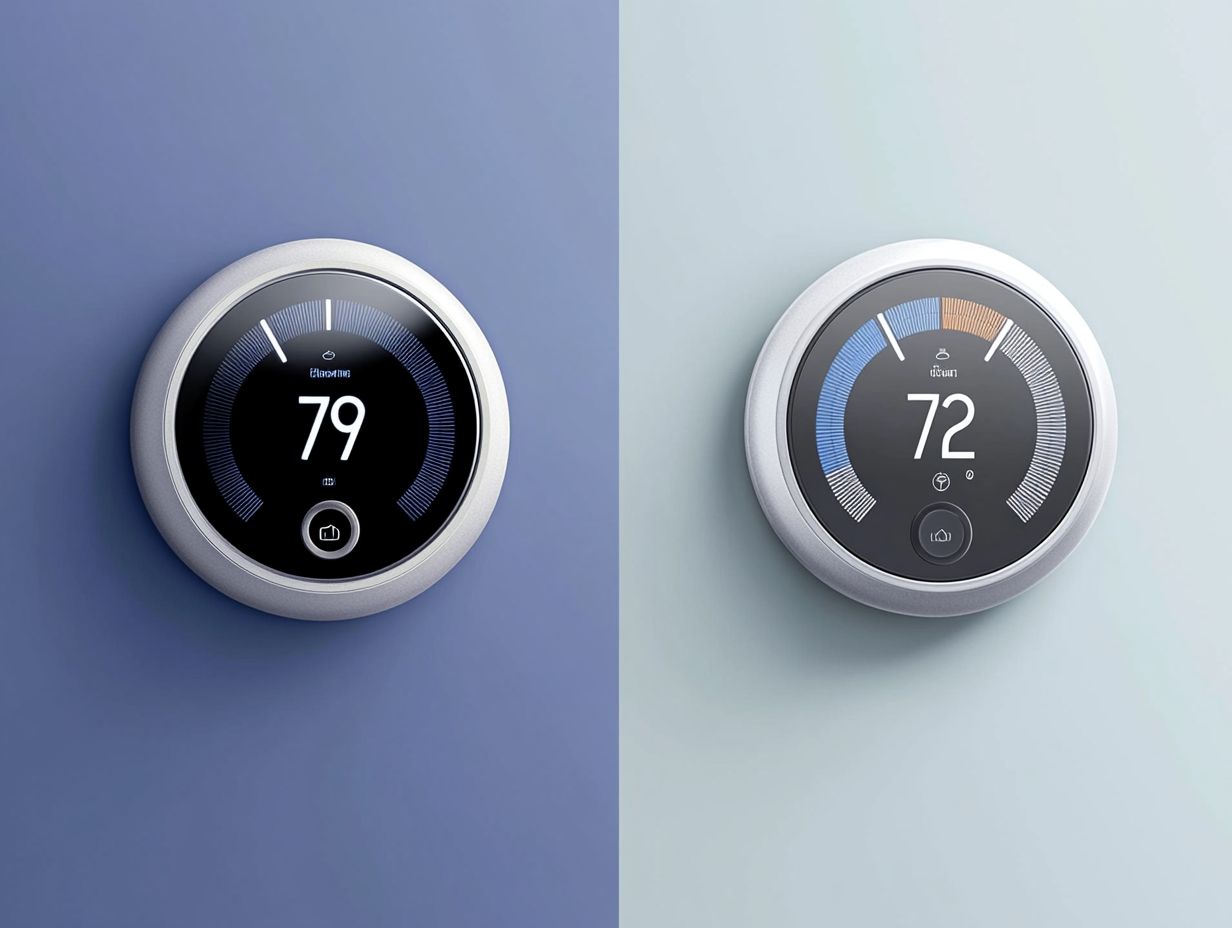
The main difference between smart thermostats and traditional thermostats is that smart thermostats are equipped with advanced technology and can be controlled remotely through a mobile device. For a deeper understanding of their advantages, check out the benefits of smart thermostats, while traditional thermostats can only be controlled manually.
Do smart thermostats save more energy than traditional thermostats?
Yes! Smart thermostats are your best friends for saving energy and money. They use advanced sensors and algorithms to learn your heating and cooling patterns and adjust accordingly, saving you money on your energy bill.
Are smart thermostats more expensive than traditional thermostats?
Initially, smart thermostats may be more expensive than traditional ones, but they can save you money in the long run due to their energy-saving capabilities. The convenience and control they offer can save you money today and in the future!
Can I control my smart thermostat if I am away from home?
Absolutely! One exciting benefit of smart thermostats is their remote control feature.
With an internet connection, you can easily tweak your thermostat settings from anywhere how convenient is that?!
Do smart thermostats require a Wi-Fi connection?
Yes, to use all features of a smart thermostat, you need Wi-Fi.
Without it, the thermostat works like a regular one, but you ll miss out on the advanced options.
Can I still use my smart thermostat if I don’t have a smartphone?
Yes! Most smart thermostats have a control panel for manual adjustments.
However, you won’t be able to control it remotely without a smartphone or another internet-connected device.


